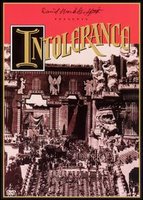The National Jazz Museum in Harlem deserves credit for putting together the best panel on post-Katrina New Orleans at a jazz event I have yet attended, and I have suffered through many. Typically, they degenerate into a spectacle of Bush Derangement Syndrome, which does not help anyone. However, in a drastic departure from tradition, the Jazz Museum actually presented a panel with some philosophical balance as part of their Jazz for Curious Listeners educational series.
To be sure, there was plenty of Bush bashing, most vociferously from Stanley Crouch. Giving some programming balance was Anthony Napoli of the Gilder Lehrman Institute of American History. Mr. Napoli was not there to defend the Bush administration, but to speak of the Institute’s efforts in New Orleans. Yet, he did mention the Republican roots of his organization’s co-founder, Lewis Lehrman, the philanthropist and gubernatorial candidate who lost a close, hard-fought race against Cuomo in 1982.
In fact, the Gilder Lehrman Institute’s efforts in New Orleans have been considerable. They have worked with two charter schools, one in Algiers, the other near Tulane, restocking their libraries and helping arrange funding for their history departments. They have started special Saturday academies for supplemental instruction in American history, and by extension the basic knowledge students need as college prep. The Institute is even planning to open a special high school in New Orleans focusing on U.S. history. These are all real, tangible efforts on behalf of the city. You would think the Mayor would be interested in their efforts, or at least be willing to meet with them, but evidently not (you can support their efforts here). It is why moderator Loren Schoenberg concluded the panel saying words to the effect that regardless of their politics, everyone on the panel cared about the people of New Orleans. Very refreshing.
In addition to talk, there was also music, from panelist Jonathan Batiste. A New Orleans native, Batiste broke up the discussion with periodic musical selections, including a NOLA flavored “Green Chimneys.” He also doubled on melodic at one point, swinging it hard. (Melodicas seem to be in vogue lately, I’m hearing them much more often.) It was another good programming decision, as music is a major reason why so many care about the city’s fate.
Showing posts with label National Jazz Museum in Harlem. Show all posts
Showing posts with label National Jazz Museum in Harlem. Show all posts
Wednesday, October 10, 2007
Thursday, January 25, 2007
Epic Performance
 For some reason silent films just do not translate well for modern audiences, and not for their black and white photography. There just seems to be a fundamental sound barrier that keeps contemporary audiences at a distance. However, Wycliffe Gordon’s original score for D.W. Griffith’s Intolerance (1916), performed live last night to accompany a screening of the film as part of the Jazz Museum in Harlem’s "Harlem in the Himalayas" series at the Rubin Museum, demonstrated how music can break that barrier.
For some reason silent films just do not translate well for modern audiences, and not for their black and white photography. There just seems to be a fundamental sound barrier that keeps contemporary audiences at a distance. However, Wycliffe Gordon’s original score for D.W. Griffith’s Intolerance (1916), performed live last night to accompany a screening of the film as part of the Jazz Museum in Harlem’s "Harlem in the Himalayas" series at the Rubin Museum, demonstrated how music can break that barrier.Intolerance is an epic film of four thematically related stories from different periods of history (Babylon, 15th Century France, the Holy Land, and then contemporary California), running over three hours in length. Indeed Gordon and his ensemble played for nearly four hours straight, with only a twenty minute intermission. It was an epic performance, in which Gordon played throughout on trombone, trumpet, tuba, and didgeridoo, laying out for only the briefest passages.
Intolerance was Griffiths’ make-up movie for the racist Birth of a Nation. It was intended as a plea for peace and tolerance, although there is only one non-white face to be seen from an extra during a street scene. Many of the characters were heroic or villainous archetypes, with names like “Mountain Girl” and “Brown Eyes.” It proves the effectiveness of music to pull viewers into a challenging film, keeping their attention despite a slow start, ultimately hooking them in. As each disparate storyline reaches their simultaneous climax, Gordon’s music creates legitimate suspense.
A jazz soundtrack might sound counter-intuitive for stories of antiquity, but Gordon fits his music to Griffiths’ images remarkably well, like the stark blues accompanying the prison scenes, or the swinging groove for the Babylonian bacchanals. In addition to interesting film-scoring, it was great jazz, which deserves to be released on CD (although that would probably require at least three disks).
This is Gordon’s second score for silent film, following his commission for Oscar Micheaux’s Body and Soul. It is an impressive work as composition, and even more impressive as a display of musical endurance by Gordon and his ensemble. There is talk of a DVD release for Body and Soul with Gordon’s soundtrack. It would be great to see that come to pass, and for Intolerance as well. Modern soundtrack music, in this case jazz, may prove to be the best method to keep these films accessible, and not unseen and forgotten.
Subscribe to:
Posts (Atom)